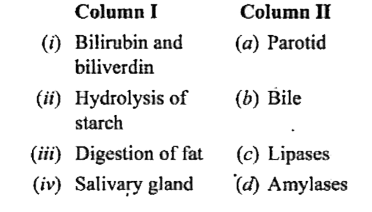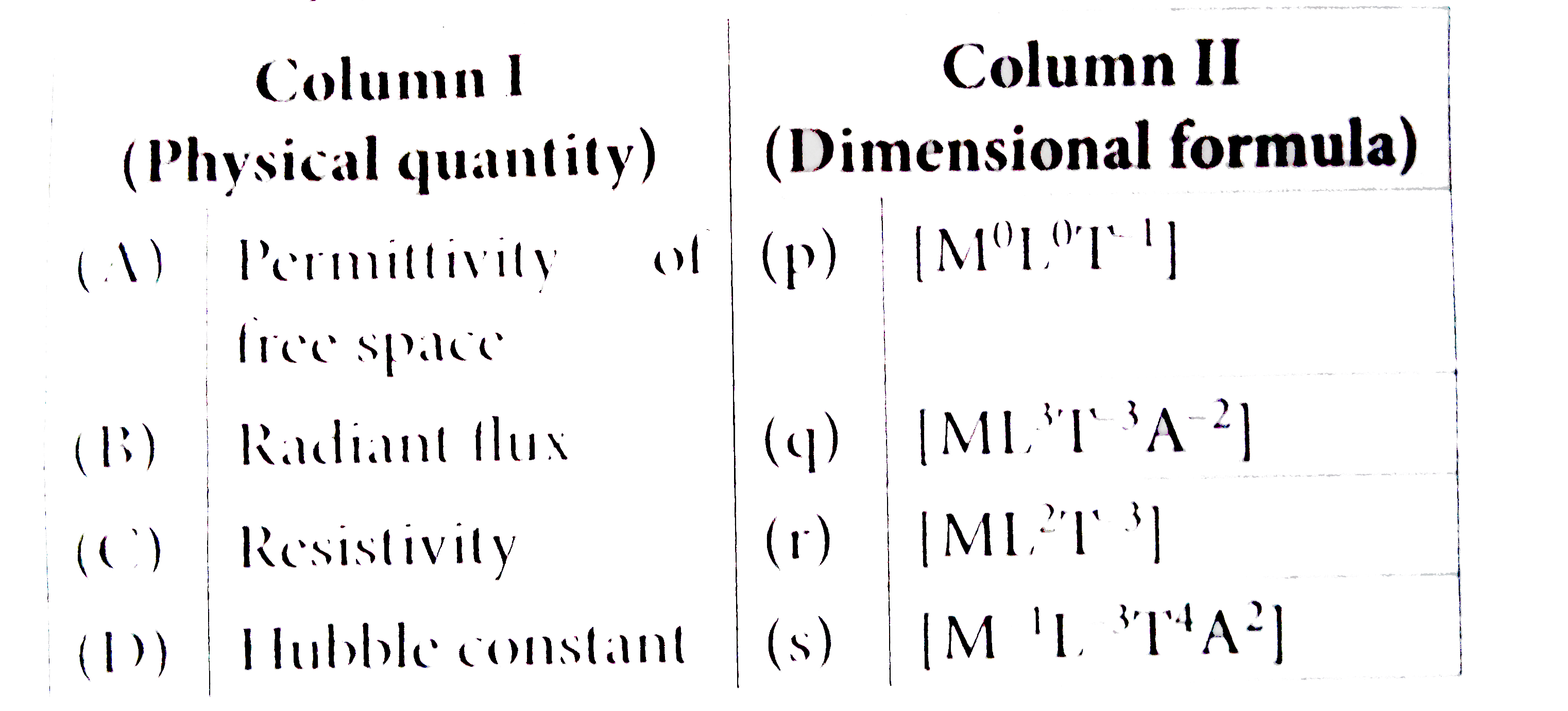Match the coloumn Hyracotherium (Column- I) Oligocene epoch (Column- II) Pliohippus (Column- I) Pleistocene epoch (Column- II) Equus (Column- I) Eocene epoch (Column- II) Miohippus (Column- I) Pliocene epoch (Column- II) Choose the correct option
a(i), b(ii), c(iv), d(iii)
a(i), b(iv), c(ii), d(iii)
a(iii), b(iv), c(ii), d(i)
a(iii), b(ii), c(iv), d(i)
The correct Answer is:C
To solve the question of matching the horse evolutionary species with their respective epochs, we can follow these steps:
1. Identify the Species and Their Epochs:
- We need to match the species from Column I with the correct epochs from Column II.
2. Match Hyracotherium:
- Hyracotherium is known to have evolved during the Eocene epoch (approximately 55 to 45 million years ago).
- Match: Hyracotherium → Eocene epoch.
3. Match Pliohippus:
- Pliohippus is recognized as the first one-toed horse and evolved during the Pliocene epoch.
- Match: Pliohippus → Pliocene epoch.
4. Match Equus:
- Equus, which includes modern horses, is known to have appeared in the Pleistocene epoch (around 4 to 5 million years ago).
- Match: Equus → Pleistocene epoch.
5. Match Miohippus:
- Miohippus is known to have evolved during the Oligocene epoch.
- Match: Miohippus → Oligocene epoch.
6. Summarize the Matches:
- Hyracotherium → Eocene epoch
- Pliohippus → Pliocene epoch
- Equus → Pleistocene epoch
- Miohippus → Oligocene epoch
Final Matching:
- Hyracotherium (Column I) matches with Eocene epoch (Column II).
- Pliohippus (Column I) matches with Pliocene epoch (Column II).
- Equus (Column I) matches with Pleistocene epoch (Column II).
- Miohippus (Column I) matches with Oligocene epoch (Column II).
Correct Option:
Based on the above matches, the correct option for this question is:
- A → C (Hyracotherium → Eocene)
- B → D (Pliohippus → Pliocene)
- C → B (Equus → Pleistocene)
- D → A (Miohippus → Oligocene)
- We need to match the species from Column I with the correct epochs from Column II.
- Hyracotherium is known to have evolved during the Eocene epoch (approximately 55 to 45 million years ago).
- Match: Hyracotherium → Eocene epoch.
- Pliohippus is recognized as the first one-toed horse and evolved during the Pliocene epoch.
- Match: Pliohippus → Pliocene epoch.
- Equus, which includes modern horses, is known to have appeared in the Pleistocene epoch (around 4 to 5 million years ago).
- Match: Equus → Pleistocene epoch.
- Miohippus is known to have evolved during the Oligocene epoch.
- Match: Miohippus → Oligocene epoch.
- Hyracotherium → Eocene epoch
- Pliohippus → Pliocene epoch
- Equus → Pleistocene epoch
- Miohippus → Oligocene epoch
- Hyracotherium (Column I) matches with Eocene epoch (Column II).
- Pliohippus (Column I) matches with Pliocene epoch (Column II).
- Equus (Column I) matches with Pleistocene epoch (Column II).
- Miohippus (Column I) matches with Oligocene epoch (Column II).
Based on the above matches, the correct option for this question is:
- A → C (Hyracotherium → Eocene)
- B → D (Pliohippus → Pliocene)
- C → B (Equus → Pleistocene)
- D → A (Miohippus → Oligocene)
Topper's Solved these Questions
Similar Questions
Knowledge Check
Match the column I with column II.
 AÂ A - q, B - r, C - s, D - pBA - p, B - q, C- r, D - sCÂ A r, B - s, C - p, D- qDA -s, B - p, C-q, D - r
AÂ A - q, B - r, C - s, D - pBA - p, B - q, C- r, D - sCÂ A r, B - s, C - p, D- qDA -s, B - p, C-q, D - rMatch the column I with column II.
 AA-p,B-q,C-r,D-sBA-q,B-r,C-s,D-pCA-s,B-r,C-q,D-pDA-s,B-p,C-q,D-r
AA-p,B-q,C-r,D-sBA-q,B-r,C-s,D-pCA-s,B-r,C-q,D-pDA-s,B-p,C-q,D-rMatch the column I with column II.
 AA-q,B-r, C-s,D-pBA-p, B-q, C-r, D-sCA-r, B-q, C-p, D-sDA-r, B-p, C-q, D-s
AA-q,B-r, C-s,D-pBA-p, B-q, C-r, D-sCA-r, B-q, C-p, D-sDA-r, B-p, C-q, D-s







